NICK CARONE
(A Studio Visit)
by Robert Sievert
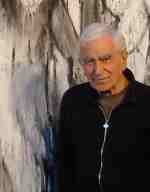

1. Nick Carone studio

2. Nick Carone studio

3. Nick Carone studio

4. Nick Carone studio
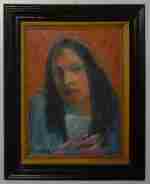
5. Nick Carone studio
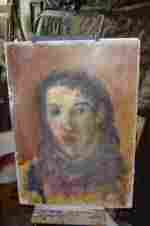
6. Nick Carone studio
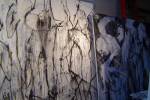
7. Nick Carone studio
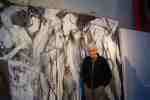
8. Nick Carone studio
April 27, 2004, A visit to Nick Carone had been in the works for a while. I got to his duplex studio in Westbeth around 5pm. He let me in to his downstairs apartment, which served as his living quarters. Nick is now 87 years old and has vision problems. His studio was up a flight of stairs.
I had been a student of Nick's in the late fifties and early sixties at Cooper Union and later in his studio. When I had studied in Nick's classes we would work from a model. We were not allowed to draw the figure. We had to analyze the space that the figure was occupying. The figure became the basis of an overall design of the page. Nick had been a student of Hans Hofmann and gave to us the rationale for the abstract art that was the focus of the art world at that time. Nick could draw better than anyone I had ever seen. His command of form and space was expressed with a classical line that seemed more sculptural than graphic. Truly he taught by inspiration.
Downstairs the first thing I saw was a painting of a head. A luminous face framed with golden hair. I thought it was truly amazing and we spoke about it for a while. He said that many friends came to visit and just walked past this painting. It had a soulful look. A face looking out from the depths of human existence It suggested a myriad of artists, Daumier, Goya, Roualt, Giocometti and yet it had its own identity.
He explained his process for working on faces to me. First he draws on paper with chalk. Over that he begins to build up a layer of tempera which he mixes dry pigment with egg. The last step is to complete the painting with oils.
We then went upstairs to his studio space. Two large windows looked up the Westside of Manhattan. Yet the view outside was the least of visual attractions in this space. Nick's paintings were piled in stacks against the walls. Tables and desks held project after project. Many, many heads like the one downstairs were around the space. Some in process. Shelves of sculptures, wax figures on stands and lying down.
What truly amazed me was the fact that Nick for all the time I have known him has been voice crying out for abstract art. Around his studio were many faces and figures. There was a dichotomy there, but it was something that I had faced many times. Abstraction can be an empty well for some artists, if it is not based on some identifiable form, ..a tree, ..a figure or some recognizable image. For many visual imaginations abstract art must suggest a reference to nature to work against if it is to have visual power. There is no denying that Nick is a master of figuration. His figurative work has power and authority.
There was a series of large abstract paintings leaning against one wall. They were about 10” x 8’ and had an imprint of everything Nick had ever spoken about in his classes. There was a grand overall design to each painting. Extremely decisive and improvised lines and spaces created an overall image that reverberated and set up visual as well as poetic tension. The language of expressionism was stated again and again. The forms that dominated the large mural sized black and white paintings were clearly based on human anatomy.
We looked at paintings that he dragged out from under piles of work. They were from the fifties and had that definitive abstract expressionist look. Thick impasto strokes built up an image of angst in action. The technique was assured and accomplished.
So here is Nick at age 87 -- a painter who has spent his life exploring the line between abstract and figurative art. There is no conclusion. There is only the on going pull between abstraction and figuration. Perhaps some day we will be able to see all phases of his work hung in a retrospective and then be able to understand his accomplisment.
Text copyright © 2004 Robert Sievert
 back to Contents page
back to Contents page